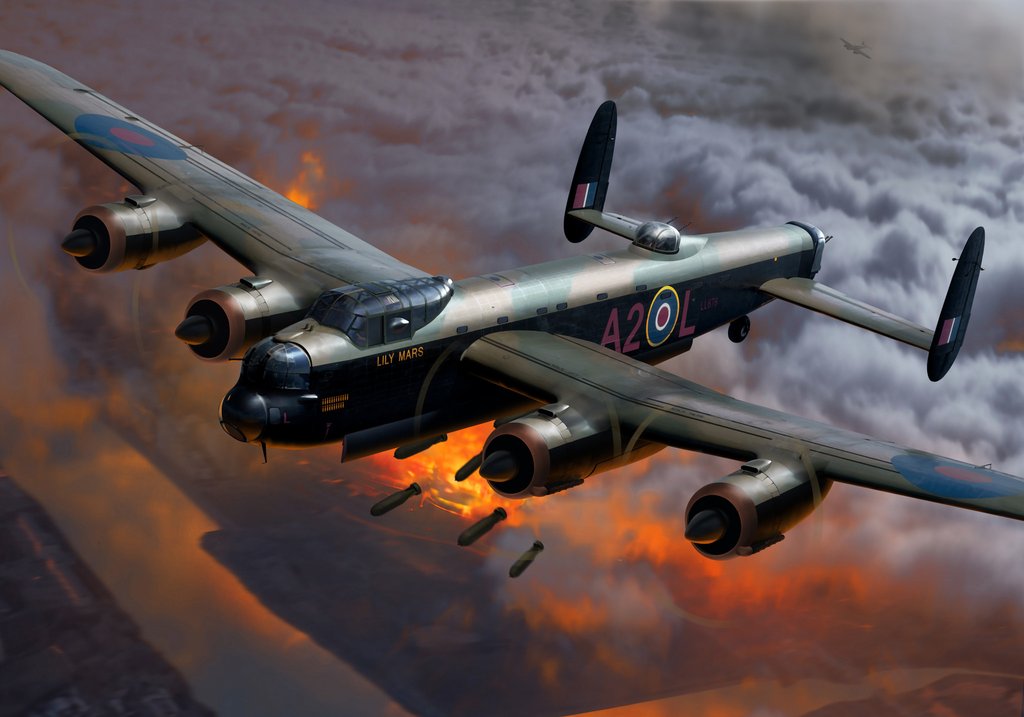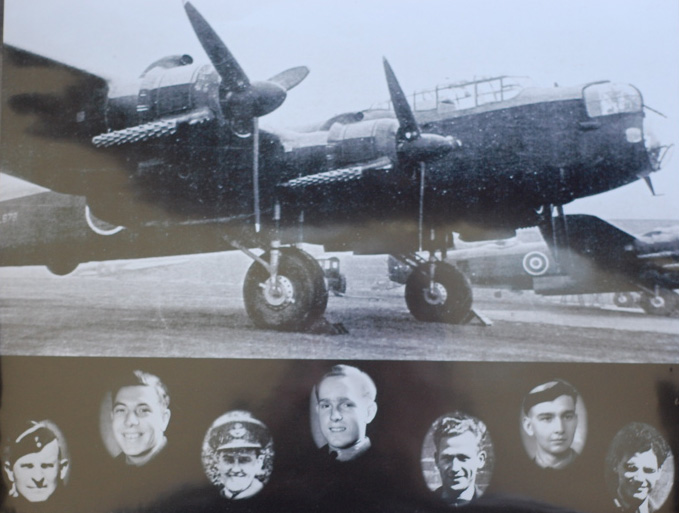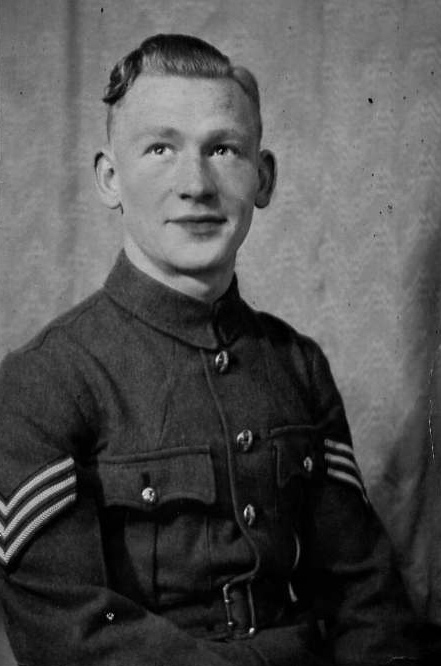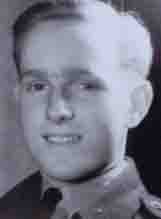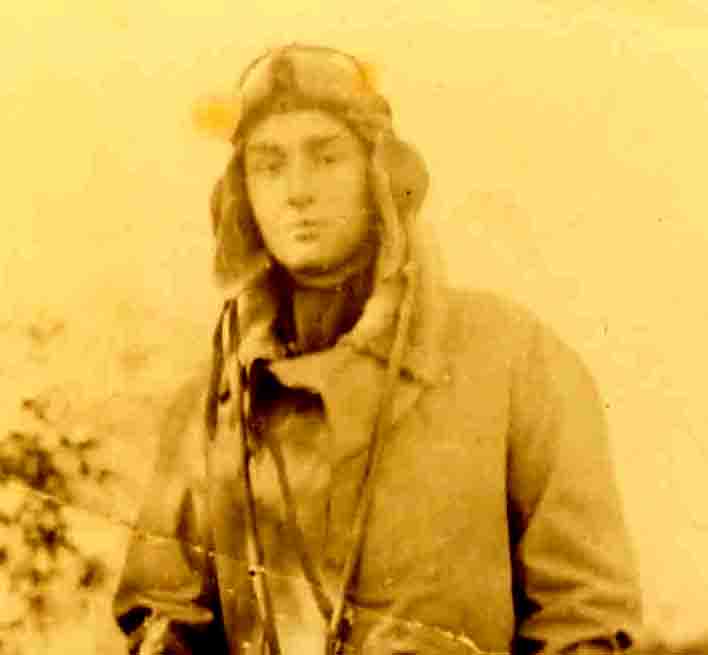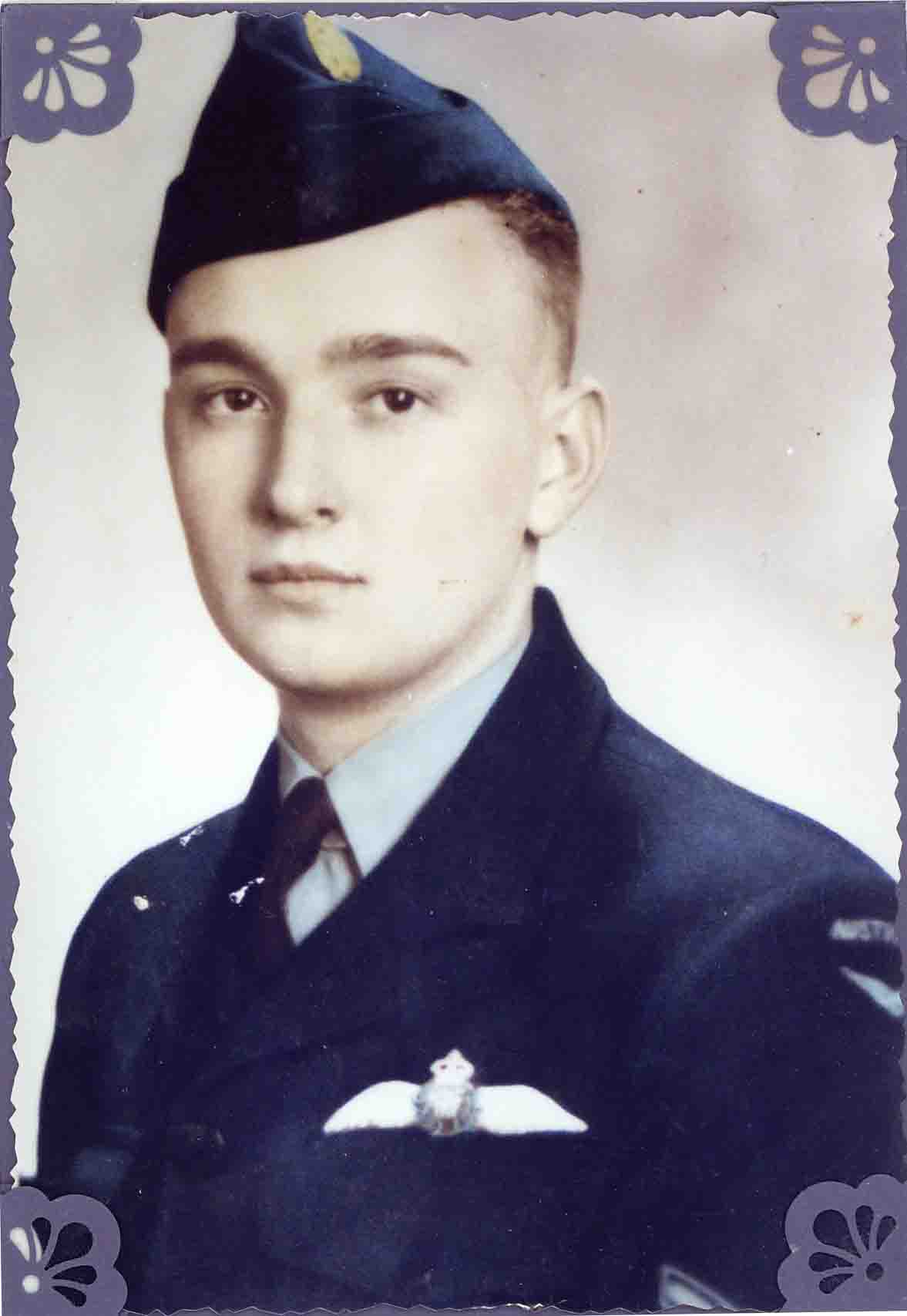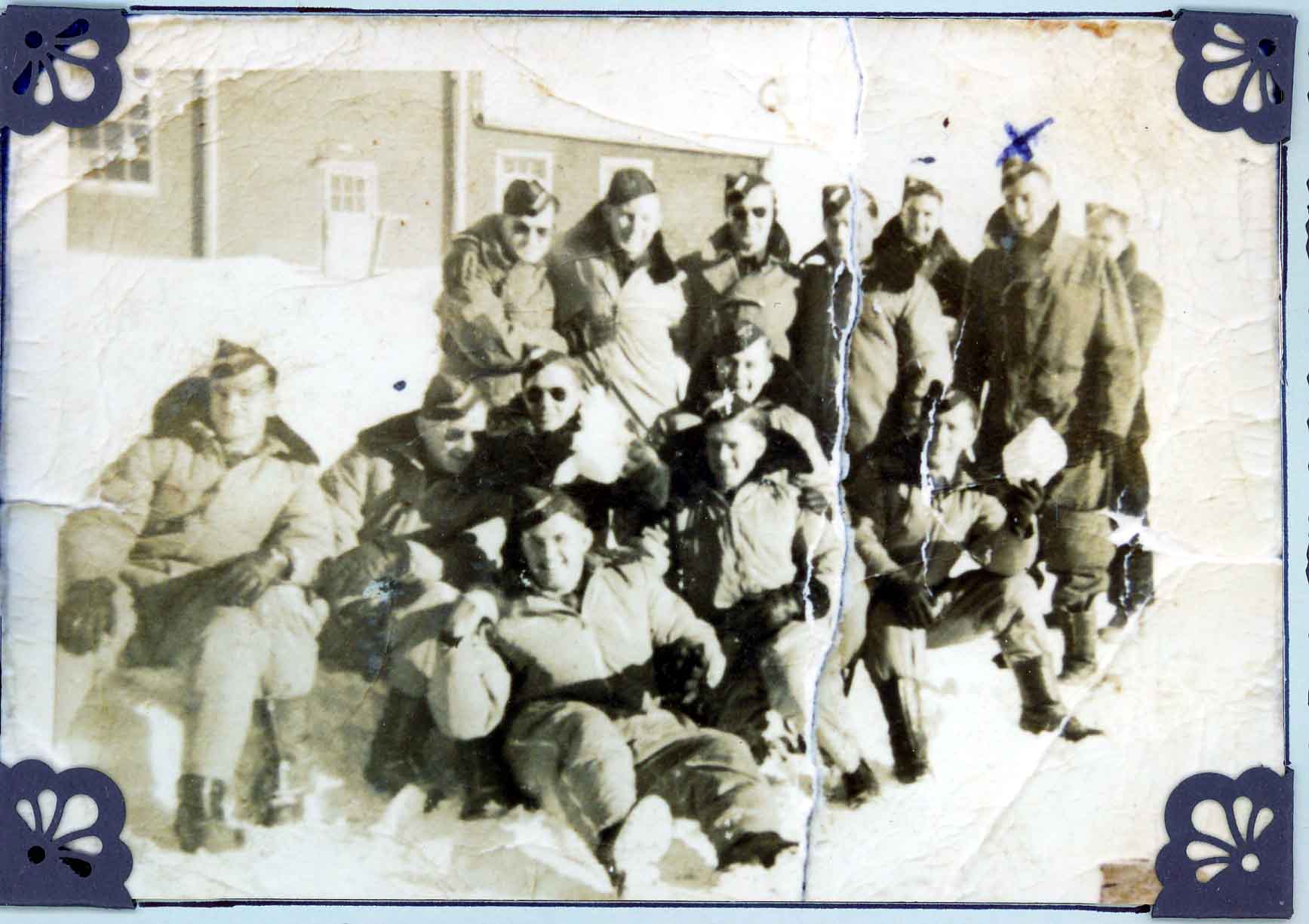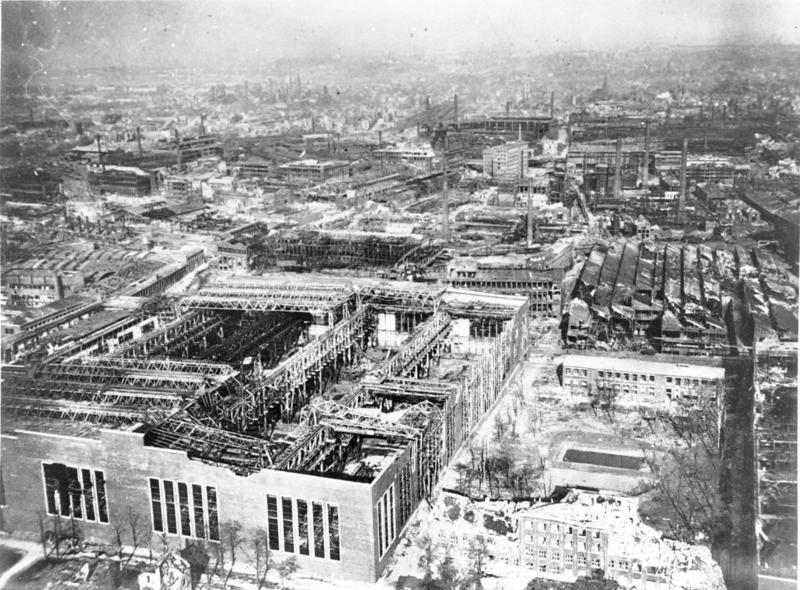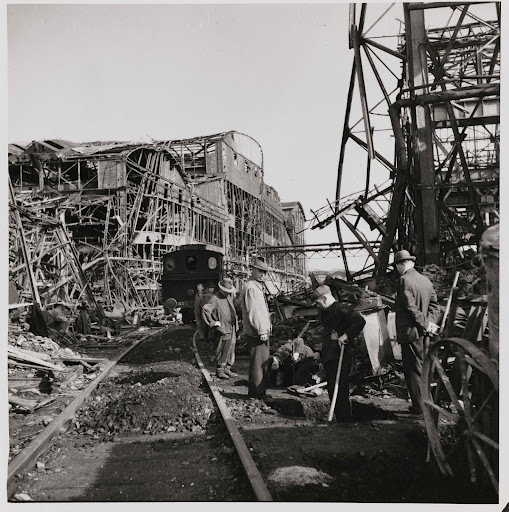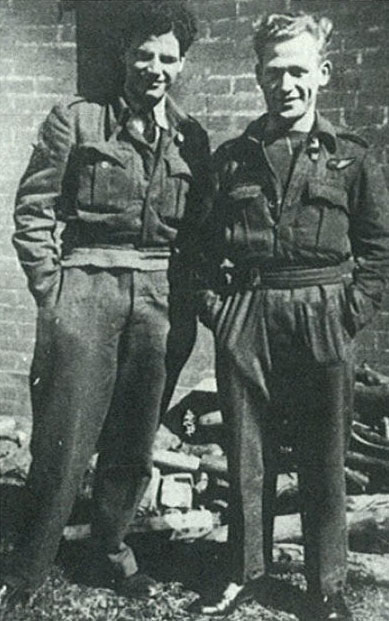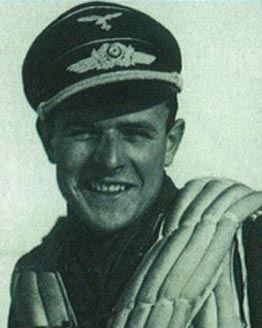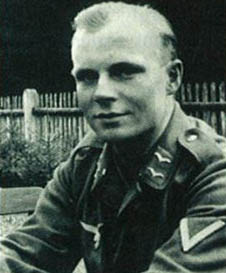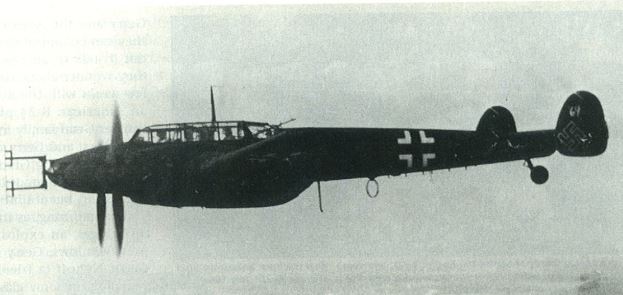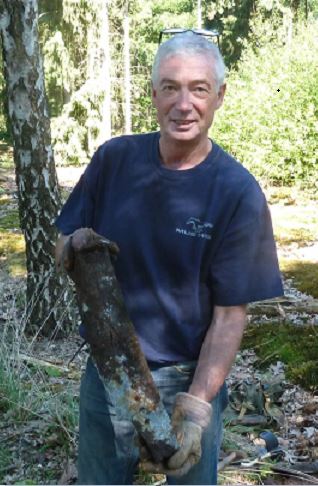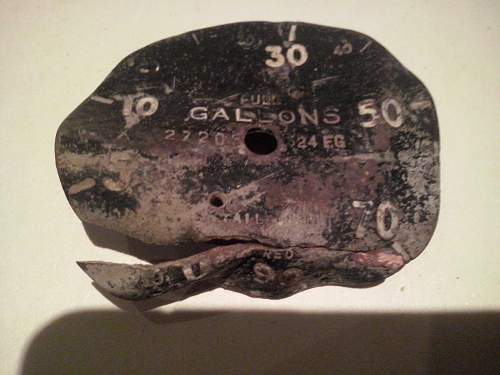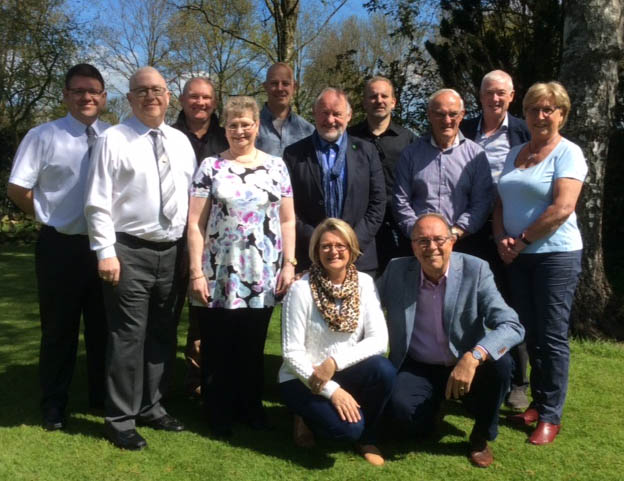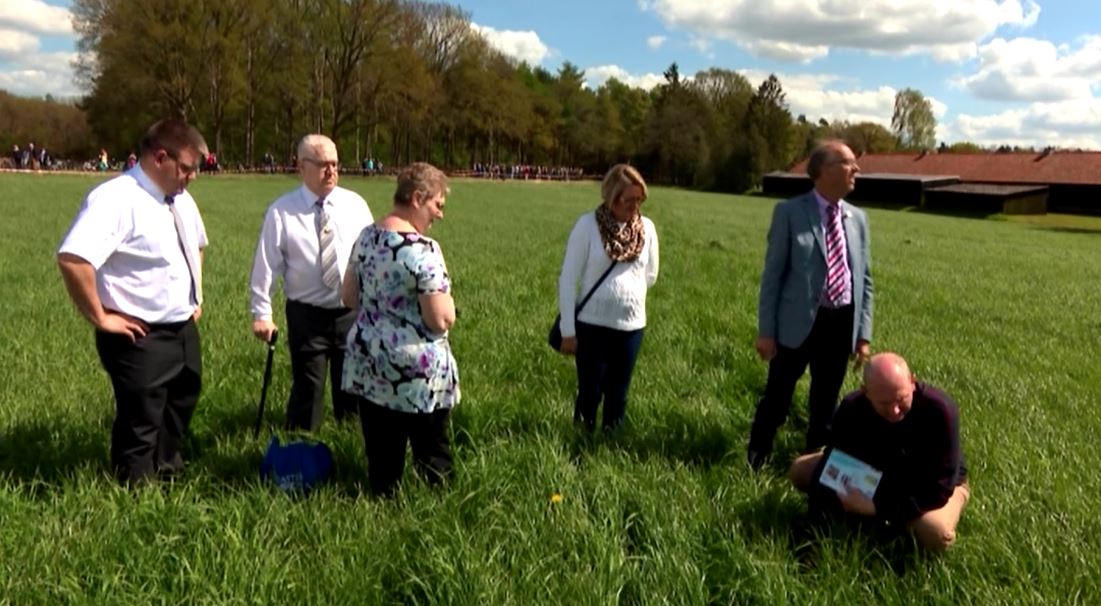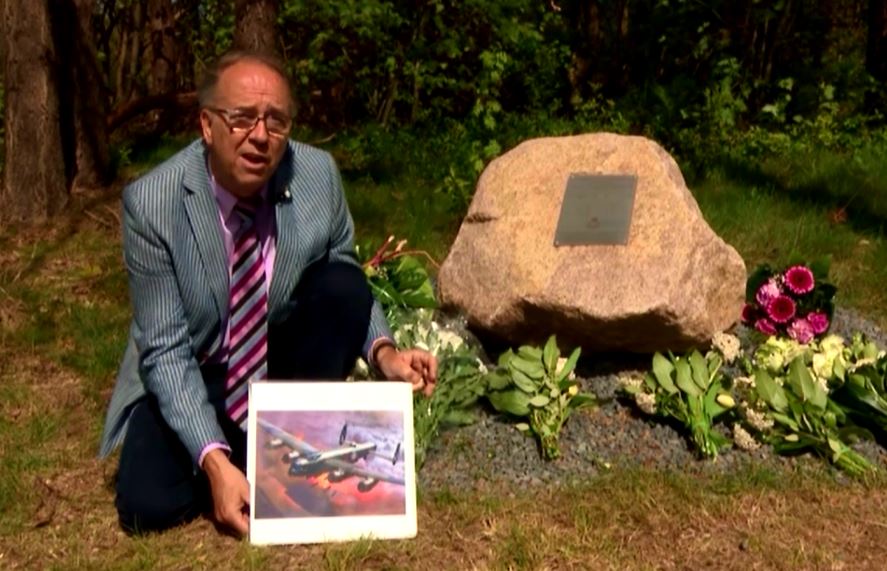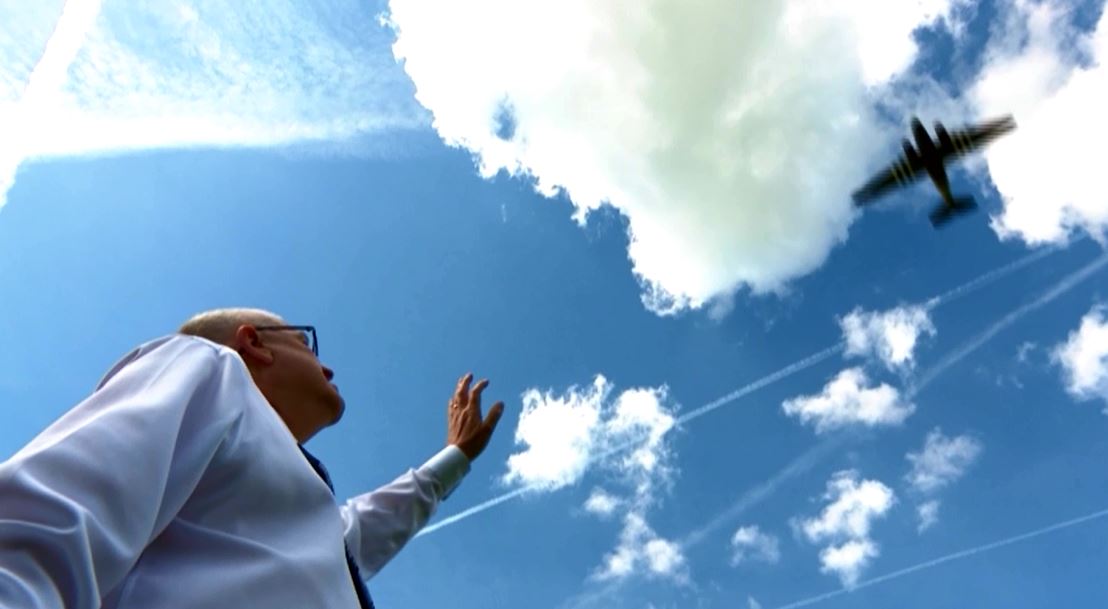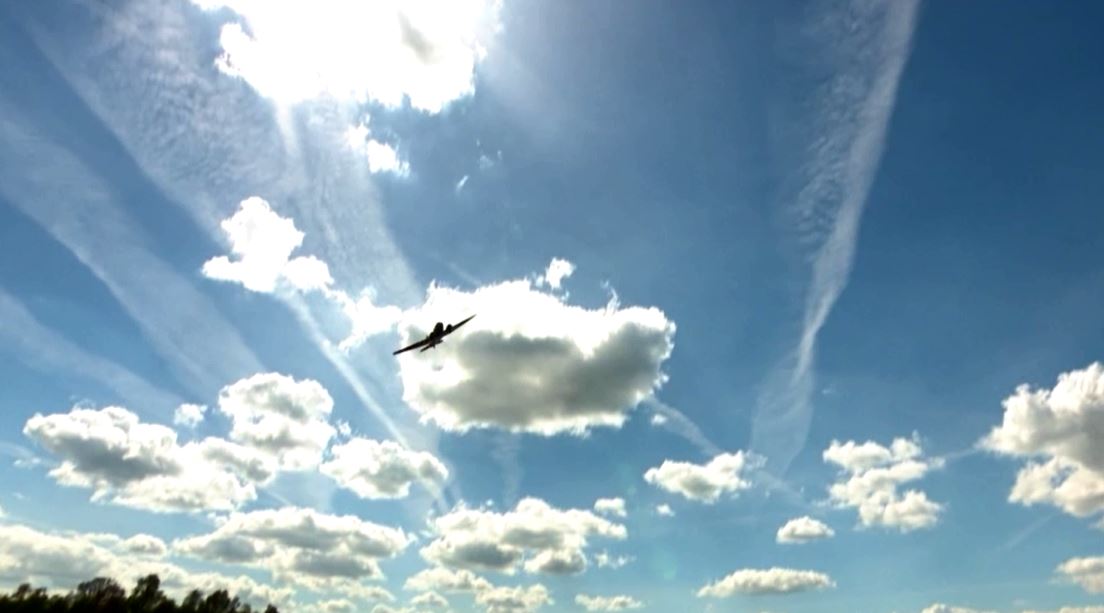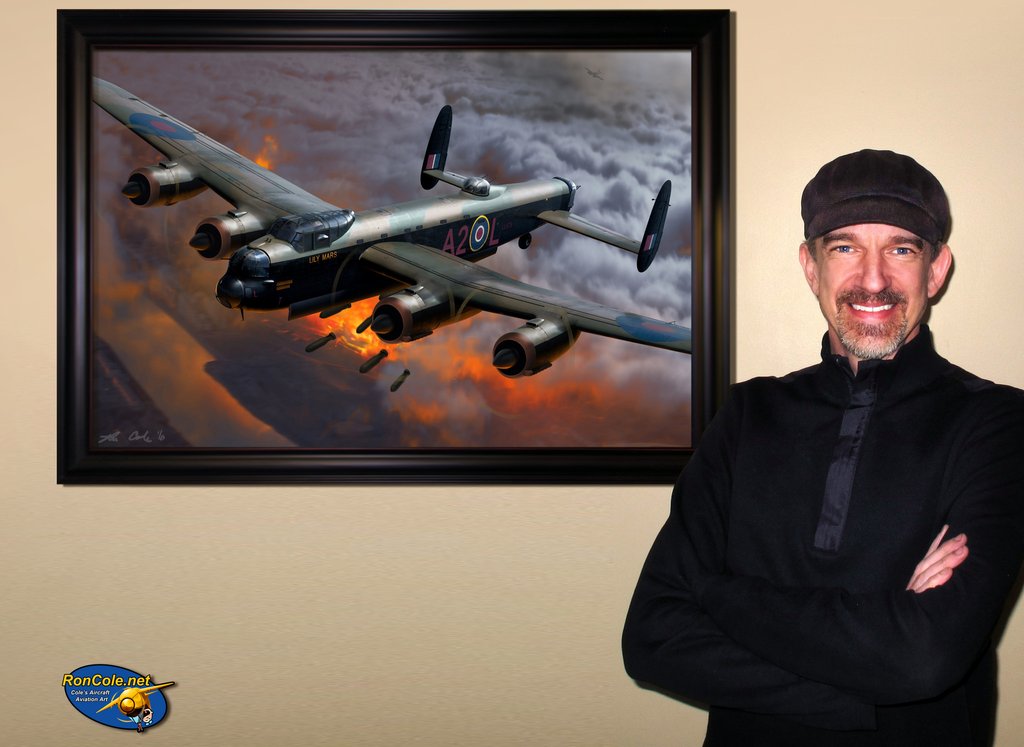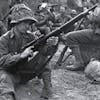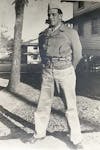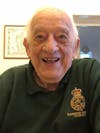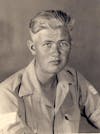14 The Last Flight of Lancaster Lily Mars, WW2

Tragic tale of an RAF crew & their beloved plane, WWII
The story of WW2 Lancaster bomber LL678 together with its courageous crew during WW2 in 1944 | The Lancaster’s veteran RAF crew of Canadian, Australian and English airmen had been on what was to be their last mission before they retired. | And on a mission with almost too many cruel twists to bear, we hear the last poignant letter sent by the pilot to his family in an unwitting but foreboding prediction of the WWII mission’s fate.
Best podcast for World War 2 history and the second world war
Please link to rate or review on iTunes - Thank you very much.
Flight Sergeant Donald Savage, Rear Gunner

Useful WW2 Links
Wikipedia's great page on the battle of the Ruhr
Flight Journal magazine - with thanks for the extract from Gerald Martin's story
More info on the elite Pathfinders, which many of the crew wished to join
Buy Bill Cheall's book, the story behind the stories - Fighting Through from Dunkirk to Hamburg
Link to Dutch website on Lily Mars
Great forum on, guess what? And more pics.
YouTube video on how to escape from a Lancaster with an axe!
Interested in Bill Cheall's book? Link here for more information.
Fighting Through from Dunkirk to Hamburg, hardback, paperback and Kindle etc.
"As they approach the target they drop their load on the mark of George Palamountain, the bomb aimer. There is a sense of relief. They are now free to get the hell out of there."
Painting of the Lily Mars in action from Gallery Luminaria - See more below
"As Gerry floats towards the ground, he takes off his headset and lets it drop. As he lands he quickly gets his thoughts together. He catches a movement and freezes as a pair of dark figures approach. “Who is coming?” he wonders and thinks about dropping his chute and reaching for his sidearm ..."
Crew:
514 Squadron, RAF Waterbeach:
P/O HS Delacour (Australian) - Killed - 2nd right
F/O Roy Picton - Killed
F/S Don Savage (British) - Killed - 3rd right
F/S George Palamountain - Survived - 1st right
Sgt Spurgeon 'Pop' Williams (Canadian) - Survived - 1st left
Sgt Albert Benham - Killed
Sgt Gerald Martin (British) - Survived - Middle
Observer: P/O S A Phillips - Killed
Dad's pal and rear Gunner, Flight Sergeant George Donald Savage 1523883, Killed in Action, aged 20
Flight Engineer, Sergeant Gerald Martin, Survived, died 2008
Pilot Officer Bertie Delacour, Killed in action.
Training in Canada - Bertie Delacour marked with a cross. This photo was sent home to Bert's mum when he was training in Canada hence the snow.
The Lancaster LL678, The Lily Mars, 514 Squadron, WW2
Devastated WW2 Essen and the Krupp factory from Wikipedia
WW2 Essen and the Krupp factory. Bill Cheall stood in a similar spot when he remarked on the devastation of Essen and how the Krupp factory had manufactured steel for tanks and 88mm guns
Don with crew mate and bomb aimer George Palamountain at Waterbeach, Cambridgeshire England
Dietrich Schmidt, the German flying ace who shot the Lily Mars down.
Radar Operator, Kurt Schonfeld in Neubiberg nr Munich, WW2
The night fighter wingman of Schmidt
Joop of Planehunters holding part of a recovered plane
LL678 Lancaster Lily Mars Fuel guage
In Frans' garden just before the memorial ceremony at Bathmen
Inspecting the exact spot where the ww2 crash happened
Frans Hendriks unveiling the WW2 memorial with the specially commissioned painting of the Lily Mars in the foreground
Don Dawkins waves a final goodbye during the flypast at the WW2 memorial ceremony - Possibly the most poignant pic of all!
The loyal WW2 Dakota acts as a surrogate Lily Mars
Escape hatches on the Lancaster showing, front, where several crew escaped, and the rear hatch which was also used. Link to more info, RAF Lancaster
Artist Ron Cole in front of his painting of the Lily Mars. Fantastic prints of various kinds can be bought from his web site at this Lily Mars Painting link.
The Last Flight of Lancaster Lily Mars - WW2 podcast
Intro
This is the story of Lancaster bomber LL678 together with its courageous crew, including my Dad’s best pal, Don Savage, during WW2 in 1944.
The Lancaster’s veteran RAF crew of Canadian, Australian and English airmen had been on what was to be their last mission before they retired.
And on a mission with almost too many cruel twists to bear, we hear the last poignant letter sent by the pilot to his family in an unwitting but foreboding prediction of the mission’s fate.
I’m Paul Cheall, son of Bill Cheall whose WW2 memoirs have been published by Pen and Sword – in FTFDTH.
The aim of the Fighting Through podcast is to give you the stories behind the story.
Here are few paragraphs from Dad’s memoirs to introduce his best pal, Don Savage .
“At the time war was declared in 1939, I was on a camping holiday with three pals; our site was on lovely farmland at Crediton in Devon, England. I had never travelled so far south before and it had been my intention to go as far as Lands End.
My car was a Morris Ten, registration VN 9248, and had been bought new in 1936 for 187 pounds – a lot of money then. It was a lovely warm sunny day, in an unspoilt meadow where wild flowers were growing in abundance, and the larks hovered in the sky. I hadn’t a care in the world.
I’d been for a dip in the river which ran at the bottom of the field, and on my way back called at the farm for fresh milk and eggs which we had for breakfast
Life was wonderful. I stretched out on the grass, under a scorching sun, my head resting on my arms, thinking, and listening to the wireless.
Around 10.30 am the programme was interrupted for a news flash and at that moment my little world fell apart.
The newsreader announced that a national emergency had been declared and that all members of the Territorial Army were to report to their headquarters without delay, to be ready for service in two days’ time. I was flabbergasted; it was 22 August 1939 and a day I would never forget.
Our camping holiday came to an abrupt end and we all set to, pulling the tent down and packing the car. We were soon on our way back home up north, three hundred and twenty miles away.
One of the boys was named Don Savage. He was only eighteen and a grand lad and we had been good friends.
He was a splendid scholar at grammar school and when he left it, he joined the RAF, becoming an air gunner on Lancasters.”
Don was the son of Henry and Annie Savage of Southbank, near Middlesbrough, Yorkshire, England.
And to give him his full title, Flight Sergeant George Donald Savage 152 3883, of 514 Squadron, was a rear gunner in a Lancaster bomber and had flown 28 missions before the plane was shot down by a night-fighter.
Five of the crew, including Don, died when the plane crash-landed in Holland. They’d been due to be rested after this, their 29th and last mission.
So what follows is the tragic yet heart-warming story of RAF Lancaster LL678, fondly known as the Lily Mars, named after the 1943 American musical film starring Judy Garland.
The Crew
The home of Lily Mars was RAF Waterbeach, in Cambridgeshire, England.
And it’s ironic really that it was only 5 miles from where dad eventually retired when he finished working.
Don started his training on 31 August 1943 at Air Gunner School at Andreas on the Isle of Man.
The crew was one of mixed nationalities, led by Pilot Officer Bertie Delacour, an Australian. Bertie was the only Australian in the crew with the rest made up of Canadians or Brits. The crew generally called him Dellie because of his last name, but his family called him Bertie.
F/O Roy Picton, Navigator, (British) -
F/S George Donald Savage (Rear Gunner) (British) -
F/S George Palamountain (Bomb Aimer) (British) -
Sgt Albert C Benham – Wireless Operator - (British) -
Sgt Gerald (Gerry) Martin, Flight Engineer, (British) –
Sgt Spurgeon Williams (Mid upper gunner) (Canadian) -
Also on board as observer was Canadian Pilot Officer S A Phillips who was there as an observer as he was to take over the plane after this mission.
They had all flown together from the beginning, starting in Sterlings and then 24 ops in Lancasters.
Shane DeLacour, from Australia, is Bertie’s nephew and has told me that after this mission they would have finished their tours and could go home though Bertie and some of the crew were wanting to join the [elite] Pathfinders after completing the tour.
Second world war WWII History podcast, World War 2
The Mission
The backdrop to the mission was part of an ongoing campaign to bomb the German River Ruhr area, which had coke plants, steelworks, and synthetic oil plants.
The prelude to the boys’ mission was a meal together (steak and chips I guess, if anyone has listened to Claude’s interview in a previous show!) Then to the briefing room where they were introduced to F/O Phillips who was to take up Gerry’s normal seat next to the pilot.
They’d all been hoping for what was called a milk run which was more of a routine and less likely to involve enemy engagement. But instead they had been given a target deep in central Germany – the Ruhr basin – the large synthetic oil refineries of Gelsenkirchen (not far from Dusseldorf, where Dad ended his war policing the local population!).
The campaign bombed various targets which included the Krupp armament works at Essen. Listener I’d just like to pick up on that because in Dad’s memoir he describes being a Regimental Policeman keeping the peace in devastated occupied Germany after the war. Blow me he was only on duty at one point in Essen and described standing next to the bombed out Krupp factory. This is what he said in his book:
“We went through what had been Essen and hardly anything had been left standing and whole areas had been blasted into heaps of rubble. Essen had been a very important part of the German economy, so crucial to their war effort, and the Allies making it a prime target had destroyed its potential.
I saw a large twisted sign leaning against a pile of rubble, which had been a
factory. It said, ‘Alfred Krupp’. I wondered how many Tiger tanks had been turned out from there. Yes, and steel to make the dreaded 88mm guns, which had caused so many problems in battle to our lads.”
So there was my Dad, in 1945, standing next to a complex that in 1943 could well have been bombed by the crew of the Lily Mars, including his best mate, Don – yet another coincidence in the expanding jig-saw of this podcast.
You know I’ve only just worked that one out. It’s only by researching the background to these stories that you discover these things and I never cease to be intrigued by what I discover in my travels with this podcast.
The operations records of the Lily Mars show that at various times she bombed Berlin, Stuttgart, Frankfurt and indeed Essen.
So, Lily Mars was airborne from Waterbeach just after 23:00 hrs on 12 June 1944 (6 days after D-Day).
Wikipedia:
British raids were by night - the losses in daylight raids having been too heavy to bear. By now the Pathfinders could mark the targets despite the industrial haze and cloud cover that obscured the area. Guidance markers put the main force over the target area, where they would then drop their bombloads.
The bomber stream concentrated the force of bombers into a small time window, so it overwhelmed fighter defences in the air and firefighting attempts on the ground.”
Background – other flight reports
I’d like to share with you one of the reports which came in from another flight crew who’d been out that night, sharing the same mission:
It’s from RAF Wickenby, Lincolnshire, (1 Group Bomber Command) with F/O Bob Bennett in command. The crew were fondly known as Bennet’s Beavers after the pilot, F/O Bob Bennet – hence Bennet’s Beavers
Gelsenkirchen Oil Refinery, Ruhr Valley – Heavy and light flack – hit twice – Terrific fire and column of smoke seen at target. Bomb load 12000 lbs.
Navigator’s Comments – Sgt Harry Hayton
Very heavy flack and searchlight activity. We sustained damage from flack. We saw enormous fires over the target area. Duration 4hrs 40 mins. WE HATED GOING TO THE RUHR!
Mid Upper gunner’s comments – Sgt Jim Thatcher
Bombed at 20000 ft. Very heavy flack barrage and intense fighter activity, a wonder we ever got back. We saw aircraft going down in target area. We lost two aircraft from our squadron.
Bomb aimer – Sgt Robbie Robson
We were hit by flack and my size saved my life. I’m only 5’2 so sat fairly low in the front turret. A jagged piece of shrapnel about the size of an Ostrich egg hit the plane and lodged about 3” above my head.
And a supplementary note on this flight report says that
303 aircraft were used on this raid and 17 Lancasters were lost. A German industrial report shows that all production at the oil plant ceased, with a loss of 1000 tons of aviation fuel per day for several weeks.
The attack and problems - The magazine story
I now want the story to be taken over by a magazine article written about the flight – it’s a great story written by Christopher L Stuart called A Shot in the Dark in Flight Journal Magazine from 2001! Link in show notes.
They have given me permission to use their article, which is written from Flight Engineer Gerry’s perspective, and from whose testimony the facts about the Lily’s demise became known:
So, early hours of 13 June 1944:
The crew tense when Roy calls “Crossing into Germany” over the intercom. They are on schedule to drop their bombs on the pathfinder’s flare at 1:10. So far the trip has been pretty routine but as they travel farther into Germany, the excited chatter over the intercom dies.
The Ruhr basin is lit up like a Christmas tree with searchlights. It’s so bright that Gerry needs no lights to read his checklist.
As they approach the target they drop their load on George Palamountain, the bomb aimer’s, mark. There is a sense of relief. They are now free to get the hell out of there.
They turn North to leave the target area and lights. In a few minutes they will be out of Germany and racing towards England.
They look forward to the cup of coffee that’s customary after they’ve safely crossed the channel. “Crossing into Holland”, exults Roy over the intercom.
But suddenly they’re startled by loud thuds and see tracers going through the engines. Lily Mars shudders and the smell of explosions fills the cockpit. Bertie struggles to keep the plane under control and Gerry glances at his gauges, but there is nothing he can do.
The Lily Mars is dying.
“Bail Out” comes the order from Bertie. Gerry can’t believe this is happening. He grabs for his chute.
“Where are Roy and Al?” he wonders as he attaches it.
He helps Phillips attach his chute and then something terrible happens. While pulling it on, Phillips accidentally pulls the ripcord and the chute opens inside the plane.
Gerry tries to help but quickly sees that it’s hopeless so dives between Phillips’ legs for the open hatch through which George has already jumped.
As the rush of cold air hits his face he immediately pulls the ripcord and welcomes the jolt as the canopy opens wide. “I’ve made it” he thinks, but then watches in horror as Lily Mars crashes into a Dutch cornfield with at least four of its crew.
As Gerry floats towards the ground, he takes off his headset and lets it drop. As he lands he quickly gets his thoughts together. He catches a movement and freezes as a pair of dark figures approach. “Who is coming?” he wonders and thinks about dropping his chute and reaching for his sidearm. A voice calls out “Are you English?”
Hesitantly, Gerry replies, “Yes”.
Gerry is relieved to find himself in the hands of the Dutch resistance. He ends up at the the Koeslag family farm together with six other airmen, all Americans.
Listener the plane had crashed in the early hours on 13 June at Zuid Loo, near Overjssel [Zite Low, Ofer-ice-al], a small hamlet 3 km SE of Bathmen [Botman], Holland.
After a few weeks Gerry and Ed Bevins, an American B-24 pilot, are moved to the Van der Graaf family in Nijverdal (Niferdal)
They are bakers and Gerry and Ed are well-fed, at times by the unwitting Germans who bring flour to the bakery to have goods baked!
One morning, as the Germans retreat and blow up bridges, an explosion blows out the bakery’s front windows. Gerry is cleaning up inside while Gerrit Nyhoff is sweeping up outside.
A German soldier approaches Gerrit and orders him to dig a foxhole. Gerrit immediately drops his broom and runs into the house yelling “Muffin” the codeword for German, then runs out the back door and over the fence, while Gerry runs into his hiding place.
The German soldier pursues Gerrit into the bakery and runs upstairs with his rifle drawn. Suddenly Hanna van der Graaf, Gerrit’s girlfriend, stands in front of the soldier, “What are you doing in my house?” She quickly convinces him she doesn’t know Gerrit’s whereabouts and the soldier leaves saying “I’ll be back …. For that boy!”
Gerry is now used to such events and later that same day in full view of the Germans he helps to fix the roof. He often rides around town with Hanna. Some call him crazy, but Gerry considers it an adventure, albeit one that many others do not live to talk about.
Summary of the fate of the crew
On April 9 1945 the Canadians liberate Nijverdal and Gerry is soon back in England where he learns that only he, Canadian F/S Spurgeon Williams the mid upper gunner and British F/S George Palamountain the bomb aimer survived the crash.
Australian Bertie Delacour, the brave pilot, went down with the plane, no doubt struggling with the controls, and was killed.
Canadian P/O S A Phillips Observer - Killed
Then the Brits who were killed were:
F/O Roy Picton, Navigator
F/S Donald Savage – Listener you may recall from Flight Sergeant Claude Reynolds’ interview with me that the rear gunner could not fly with a parachute and had it stored towards the middle of the aircraft on a shelf – so it’s not hard to imagine how daunting the task was for Don to escape – he must have had almost no chance at the back of that plane.
Sgt Albert C Benham the wireless operator
Sgt Gerry Martin, Flight Engineer - Survived - Ironic that Gerry might have survived partly because the observer F/O Phillips had taken his place next to the pilot!
Listener I’d like to cover some of the comments made by the families on this story:
Gerald Martin’s story
Ruth Martin, his wife, provided the following closure to her husband's story:
Gerry never stopped grieving for the comrades he lost - feeling it was a great tragedy that they did not get to experience the rest of life as he did.
He visited Bertie Delacour’s nephew, Shane, in Brisbane, Australia in 2007. There are many members of the Delacour family still living there, and they had quite a gathering when Gerry visited.
Unfortunately after our return from that trip, Gerry became ill, and after a good life he died of cancer in March 2008 - the last of the crew of LL678 (Lily Mars).
I continue to be interested in the history of the crew, and my daughter put together a wonderful album of documents, photographs, and reminiscences for him. Luckily he was able to answer questions, identify people in photographs, and tell stories up until a couple of weeks before his death.
One thing that eluded us was a photograph of the whole crew, which Gerry knew existed. In fact, he had the negatives among his things when they left on their last mission.
It was his turn to get them copied. Unfortunately, those were confiscated and never surfaced again - most likely destroyed. Actually, the negatives were in Gerry's locker back at Waterbeach, but all of his belongings were taken into custody, and the negatives were not among the things returned to his mum - for obvious reasons.
Listener on that note if you think you may know of the whereabouts of the crew photograph, if you’ve got access to military records or a museum which might have a connection with the Lily Mars or crew – have a look. It would be just awesome if some photos were found after all these years.
Shane Delacour
I now want to share with you a letter which pilot Bertie sent to his parents before the mission, because it’s a lovely letter but very sad too:
Dear Mum and Dad
I hope you never get this for if you do it means I did not return from the operation I am about to set out on.
I have no feeling of premonition, nothing at all, but the reason I’m writing this to you is an expression of gratitude to you, which I want you to know I feel very much.
I’ve often wondered how it was I was so lucky to be born to such parents as you and Dad. No other Mother or father in the entire world could have been so good, kind or understanding or, to sum it up in one word, so GRAND as you have been to all of us. Together, such parents in this whole, wide, wicked world could ever be found.
Do not grieve over me too much Dad and Mum. Oh I know you will grieve and the pain in your heart will burn badly for a while, but please remember I’ve died the way I’ve always wanted to die - the way countless numbers of other fellows are dying every day in this world.
I am merely your contribution to a better, cleaner, freer world. May you obtain that world Mum. And remember it is you who are left behind who are the real heroes, not us who will die.
It is you who bear the sacrifice so grin and bear it and remember that famous motto that time heals all wounds. Yes time will erase that burn from your heart.
You and the family shall know that what you suffered was after all just a minor affair, an everyday happening in the world.
I can’t express here how much I love you Mum and Dad for it is beyond all comprehension. I hope Edna, Alma, Myra, Stanley, Betty, John, Allan and Graham all grow up to have happy successful lives.
I will not say goodbye Mum for it is not goodbye, and one day we shall all be again united in a much better land than this.
So I’ll only say
For the present
Lots of love to you all
From your loving son, Bertie
I asked Bertie’s nephew Shane “How did Bertie’s family turn out?
Bertie has 3 brothers (John, Stanley & Graham) and 3 sisters (Betty, Myra and Judith) still alive.
My father Allan passed away last August. All have lead long lives and are very nice down to earth people.
Bertie would be proud and hopefully is in a better place with his mum, dad, my dad, Edna and Alma.
Over to Don’s family
I’m really grateful to the descendants of Don's family, his nephew Don Dawkins, Irene and daughter Kelly for providing literally masses of background material and photos on Don which helped me greatly in compiling this podcast. And this is in the show notes with loads of other stuff.
In fact I’ve never seen any photos of Don. So it was very rewarding for me, to see the image of a pal which my Dad obviously held in high esteem. And what a great looking lad he was.
Irene has asked for some help on something to do with the official reports and records they have been collecting: She says
“We have debrief reports for the three crew members who survived – Williams, Martin and Palamountain, but they aren’t very clear. Does anyone listening have any idea if or how Irene and Don get obtain better copies? FTP!
The German crew in this WW2 podcast
What would you think
if one of the plane’s survivors had been able to trace the German air ace who shot them down? As it turns out, Flight Engineer Gerry Martin’s friend Chris Stuart managed to track down the German flying ace who shot the plane down.
He was Dietrich Schmidt. An ace with 29 confirmed night kills who was soon to be awarded the Knights Cross.
He flew 171 missions and was later captured by the allies but survived the war.
Oberleutnant Dietrich Schmidt was born 1919. Schmidt’s first war posting was September 1941. He claimed his first victory in March 1943, when he shot down an RAF Halifax four-engine bomber near Enkhuizen (Enkhowjen).
By the end of 1943, he’d claimed 9 victories and continued to create problems for allied aircraft and added further victories, many Lancasters, to raise his total to 43 victories in 171 missions by the war’s end.
He ended the war in the Schleswig Holstein, where he was interned by British troops. He was released in August 1945.
In 1999, Gerry travelled to Holland, where he met up with Dieter Schmidt and Kurt Schonfeld. Dieter was the pilot who shot them down; Kurt was his radio man and close friend.
Dieter brought along his papers which recorded the event. They had a great reunion, exchanging stories and Gerry also managed to meet up with members of the Dutch resistance group who’d helped keep him safe.
Listener I’ve used this phrase several times before in this show but I’m happy to use it again – HOW GOOD IS THAT?! You know what? It gets even better but you’re going to have to wait for the PS, the postscript to find out how.
Here’s some really nice feedback I’ve had recently …. WW2 podcast
Hello Paul, I'm just writing to tell you how much I've enjoyed listening to Fighting Through. I'm a blind person. You brought the diaries to life and I really hope you do more than 13 shows. I hope your dad's book will be on Audible and it’d be great if you were reading it. I live in England and downloaded your podcasts on a device called a Victor Reader stream – it’s a device for blind people. Best wishes, Si Watson
Simon thank you so much for those comments. It means a lot to me that people with hearing or sight impairment enjoy the show because my Mum suffers from both those challenges and she was part of the inspiration behind what I’m doing. I do hope to get Dad’s book and other material on Audible so rest assured I’ll publicise it far and wide when I do. I can’t give you a date yet but watch this space.
Regarding little ship The Bee - What a lovely story, it brought back memories of my Dad as he was in the BEF and was rescued from Dunkirk. He was in the Royal Engineers and later joined the Dunkirk Veterans, which sadly disbanded as there were so few still alive.
Dad was injured by a reversing Lorry during the retreat. But he was rescued on The Canterbury which we believe was the British Rail cross channel ferry. He boarded in Dunkirk Harbour and was taken to Chatham in Kent.
After that he spent the rest of his service as a despatch rider in Scotland.
My Dad wrote a few poems which I treasure. If you would like to have a copy I would gladly send them to you. Yours, Rita Cooper
Listener I’m pleased to say that Rita has sent me her Dad’s very entertaining poetry and I’m going to cover it in the next show. So thanks Rita for the feedback and very poignant poetry.
For those who recall Doug Gray’s rhyming reminiscences from a few shows back, John’s memories of the Blitz and other episodes of the war strike a similar chord – so don’t forget to listen in. And bear in mind this is fun poetry, written by a soldier, often with shells flying over his head, so do try to spare 15 minutes to listen to John’s efforts.
Plus bubbling under in the not too distant future is going to be more coffee with veteran Wilf Shaw, who’s going to regale us with more entertaining war talk from North Africa and Normandy.
And I’m soon going to be covering a most breath-taking piece of history in a memoir on Gallipoli by Fred Reynard who you may recall was the chap who wrote the Dunkirk Bee memoir.
I know you’ve waited a while for this Lily Mars episode … and I’m going to work hard to get a few more shows out soon so you have some more great unpublished history to listen to with the Fighting Through podcast.
For now, thank you so much for listening. Loving it or hating it, or any questions, drop me a line fightingthrough@yahoo.com on anything.
Above all, I would ask you to leave me a review which helps enormously in promoting the show to other listeners, who, bear in mind, send in many of the stories in this podcast!
So the more subscribers we get, the more likely we’re going to keep coming up with new memoirs.
I’m not charging for my work but I would ask that if you enjoy the podcast you do show your appreciation by clicking on the feedback link in either the show notes embedded in your podcast player or via FTP.co.uk.
Do it next, please!
See you soon, listener, But stay tuned for the PS coming next…
I'm Paul Cheall
PS – One of my last unanswered questions about this fantastic story is
what happened to the plane, the Lily Mars? Listener, maybe you were wondering the same thing. Well I’ve got rather a nice epilogue to share with you.
There’s an historical archaeologists group operating today in Belgium called Planehunters.
In 2015 Frans Hendriks from Bathmen asked his friend Joop Hendrix from Planehunters if they could investigate aircraft that crashed in Bathmen during WW2.
Several airplanes came down in the region around Bathmen. That summer several of the Planehunters team went down there for an inspection.
Frans had been researching documents and stories of the crashes and had visited several sites, including the crash site of Lancaster “Lily Mars”.
There was a Dutch police report from that crash, dated 13/06/1944. Combining this with other research they were able to confirm the crash location was correct.
So, Planehunters set about excavating the site …. and some remains of the plane were found and positively identified to be from a Lancaster bomber.
Some of the finds included:
A fuel indicator
A part from the chemical toilet on board!
Some Bomb bay parts
And part of the escape hatch from the cockpit - this was found some distance away about 1km southwest.
Now, apparently this was a strange find.... because the escape hatch, which was at the bottom floor of the aircraft, was meant for evacuating during a ground emergency.
not by parachute during flight. There were other hatches meant to be used elsewhere on the aircraft.
According to Gerald Martin who survived the crash, the crew got the bail out signal, Phillips by accident deployed his parachute inside the aircraft and blocked the escape hatch.
Gerald tried to help him but failed. He then ducked between Phillips legs and evacuated the plane after George Palamountain. Mid-upper gunner Pop Williams left the aircraft via the hatch at the tail of the aircraft. The other crew members couldn’t escape because of the blocked hatch.
Why didn’t they hurry to any of the other several hatches elsewhere in the plane? Maybe there just wasn’t time. One thing the German radio operator had observed was that the whole of the right wing side of the plane was in flames, so maybe fire on board the aircraft prevented evacuation via other means?
It’s interesting that if Pop used the rear hatch, why didn’t Don Savage as rear gunner? Was it because poor Don had been shot up by the German attack? The attack did come from the rear so Don as, rear gunner would have been extremely exposed.
Pop’s normal escape would have been via a middle hatch right next to him on the right side of the plane – but if that was in flames then that would explain why he went to the rear, which was probably the safest escape point, being on the tail.
There is a link in the show notes to the RAF museum which shows a diagram of the Lancaster’s layout which will help you picture what was going on.
Anyway, owing to the find, it does look like the remaining crew members opened the cockpit escape hatch in the cockpit to try and leave.
The rest, we’ll never know the exact truth, but what a traumatic few moments that crew must have had during the plane’s dying breaths.
Joop Hendrix of Planehunters, said
“When the aircraft crashed local police and the Germans were very soon at the crash location. 5 dead bodies were recovered at and near the aircraft, 3 crew members had parachuted to safety and evaded. The Germans took care of removing all that was left of the crashed airplane.
When we searched for the crash site we knew all bodies were recovered (if not we couldn’t do the search – that’s forbidden by our government)
So we just went out there and recovered small items of the plane that were left at the crash position because after such a crash not everything can be cleared.
But we did locate the exact position and although we used special detectors, there was nothing left of the plane deeper in the earth.
And after that we started a search for family etc....to inform them about the exact location.
We contacted Shane Delacour the nephew of Bertie, the pilot. He was very pleased that we had done research in this crash and we exchanged information.
Also we sent him some parts of the plane that we’d found. His father [Bertie’s brother] was still alive and was thrilled by our finds.”
Listener, all of this brings us to May 2016
After all the initial contacts with relatives, Joop suggested to Frans Hendriks to erect a monument for the crew as Planehunters had done on many occasions before.
Frans liked the idea and went ahead organising the event. He searched for more family and found Irene and Don Dawkins in England.
Irene and Don pick up the story now:
In February 2016 we received an email from Frans Hendriks requesting the ages of the crew, as Frans wanted to make a Memorial Stone.
On the 4 May, Netherlands Memorial Day, we went to Bathman. Also with us was Shane Delacour and his wife Jennine, from Australia.
The monument chosen was a big boulder with a plate attached to it. Frans organised the entire memorial and a Lancaster fly-by from the Battle of Britain Memorial Flight was arranged.
Unfortunately the Lancaster had a technical problem but they sent a replacement airplane, a Dakota from WW2.
On the evening, the villagers of Bathem walked silently round the village, then placed flowers on the many graves and memorials in remembrance. After, a service was held in the local church.
They made us so welcome - they said without our lads their country would belong to Germany.
I’m going to end the show now but in doing so, I’d like to express my grateful thanks for all the efforts made by many people to keep this story alive, over many years. The relatives and friends, who I’ve already mentioned, the people of Bathmen, the Planehunters ….
Whether it was keeping photos, researching, finding official documents, discovering each other or whatever …. A lot of people have made a lot of other people very happy.
For me, Shane Delacour, the nephew of pilot Bertie, sums things up very nicely
He recently said
“Without Frans Kendricks and Joop Hedrix and other members of the Planehunters and the town of Bathmen in Holland, the memory of these brave men may have been forgotten.
My family is in awe of everything they have done and continue to do.”
Second world war WWII History podcast, World War 2
Featured Episodes
If you're going to binge, best start at No 1, Dunkirk, the most popular episode of all. Welcome! Paul.
PS. Just swipe left to browse if you're on mobile.










